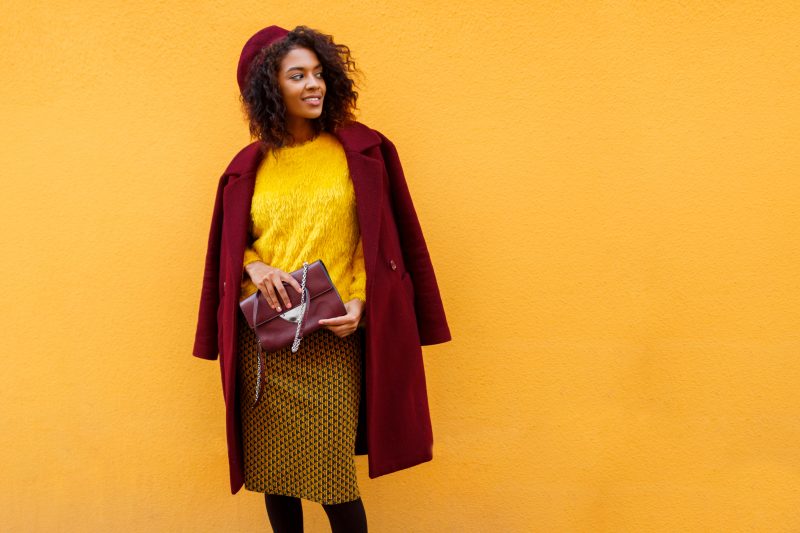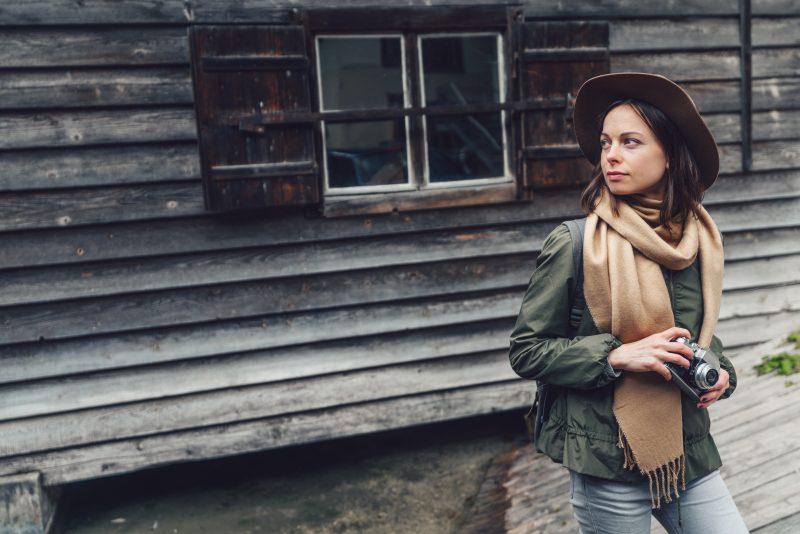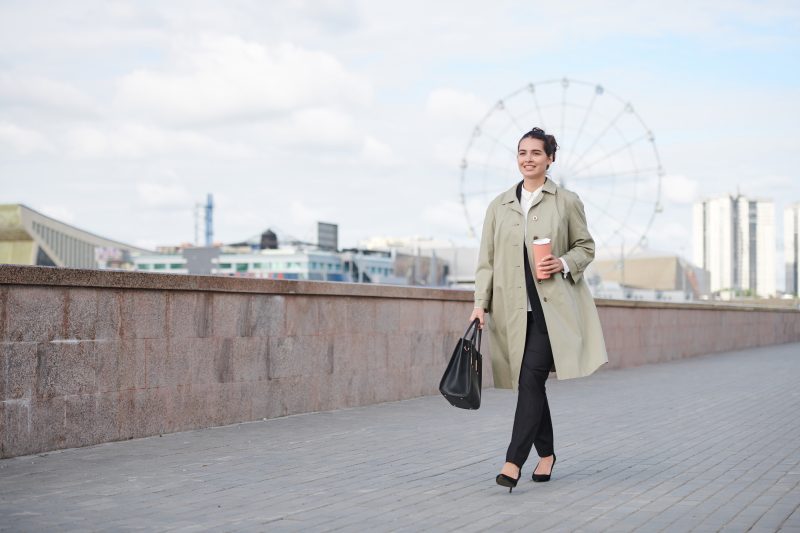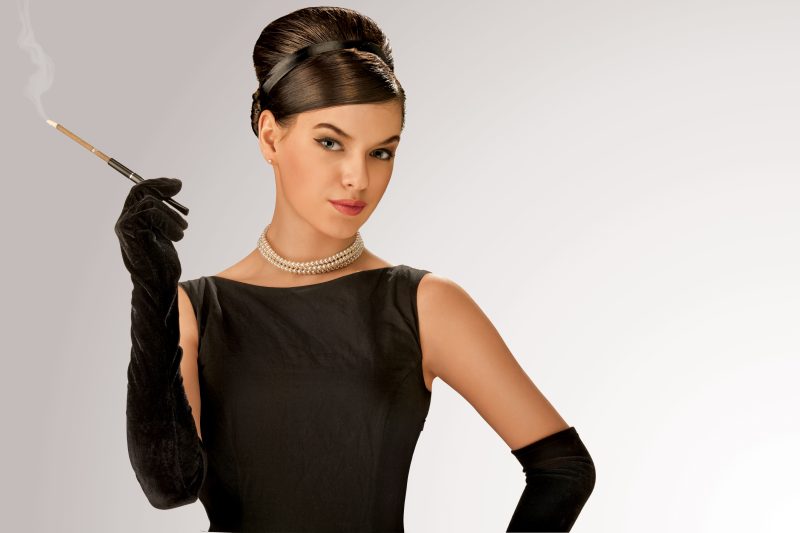I first noticed it at a gallery opening in the Lower East Side back in February. A woman walked in wearing chocolate brown wide-leg trousers and a slightly oversized cobalt blue button-down, casually half-tucked. No jewelry except for tiny gold hoops, no bag except for a sleek brown leather portfolio clutch. Her outfit shouldn’t have turned heads—it was simple, even understated—but somehow everyone noticed. Including three separate industry insiders who immediately glided over to talk to her.
“Who is that?” I whispered to my friend Emma, assuming the woman must be someone important I’d failed to recognize.
“No idea,” Emma shrugged. “But that blue and brown combo is perfect. Very now.”
Two days later, at a preview for an upcoming designer sample sale, I spotted a buyer from Bergdorf’s in a cobalt blue midi skirt with a chocolate brown cashmere sweater. The following week, three different fashion editors showed up to a press breakfast in variations of the same color combination.
By March, my Instagram feed was awash in blue and brown—not navy and tan, mind you, but specifically rich chocolate brown paired with vibrant cobalt blue.
The evidence was undeniable. While the fashion world typically fractures into numerous competing trends each season, somehow a silent consensus had formed around this particular color pairing. No major fashion outlet had declared it the combo of the season. No celebrity had made it their signature look. It had simply emerged organically among people with their fingers on the fashion pulse—the industry insiders, the early adopters, the people who can smell a shifting aesthetic wind before the rest of us have even opened a window.
“Color trends usually follow broader cultural moments,” explains color forecaster Minna Chen, who consults for several major fashion brands. “This blue-brown combination is interesting because it balances nostalgia with newness. The chocolate brown has a ’70s richness that feels grounding and authentic, while the cobalt adds a digital-age vibrancy. Together, they create something that feels both familiar and unexpected.”
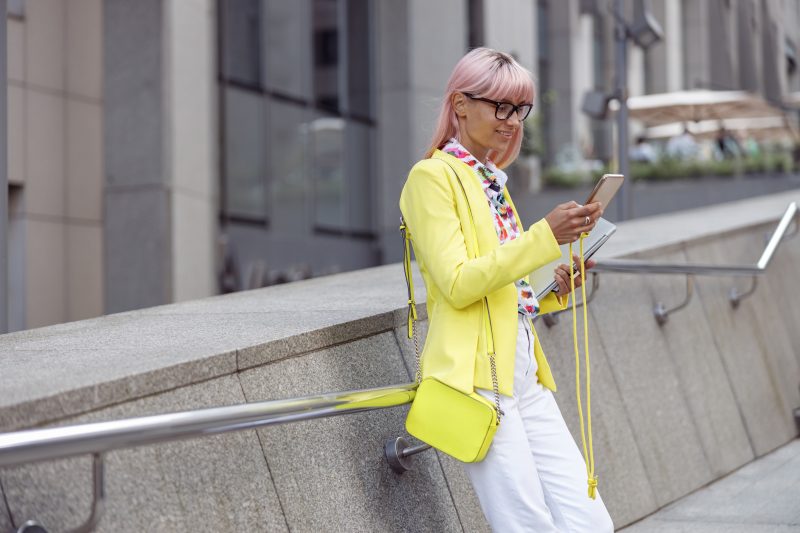
What makes this combination particularly interesting is how it’s displaced the expected color pairings of recent seasons. For years, we’ve seen iterations of complementary colors—orange and blue, purple and yellow—or tonal dressing with subtle variations of the same hue. Blue and brown technically falls into neither category. They’re not opposites on the color wheel, nor are they close enough to create a monochromatic effect.
“It’s an analogous-adjacent combination,” Chen explains, using a term I immediately Google after our call. “The colors share some underlying qualities—depth, richness—but create enough contrast to be interesting. It’s sophisticated precisely because it’s not an obvious pairing.”
What sets this specific blue-brown combo apart from, say, navy and camel (a classic pairing that cycles in and out of trend status regularly) is the intensity and specificity of the hues. The brown isn’t just any brown—it’s a deep, rich chocolate with red undertones rather than gray or yellow ones. The blue isn’t navy or royal or sky—it’s specifically cobalt, that vibrant, slightly electric blue that sits between royal and navy on the spectrum.
“Getting the exact shades right is crucial,” confirms stylist Julian Park, who works with several celebrities and has recently been incorporating this color combination into their public appearances. “If the brown is too light or has too much yellow, it starts reading as ’90s or even preppy. If the blue is too bright or too dark, you lose the tension that makes the combination interesting.”
The current iteration of this trend traces back to several runway moments from the past year. Bottega Veneta’s FW24 collection featured several standout chocolate and cobalt combinations. Prada played with similar pairings in their recent menswear. But the most influential example might have been a single look from The Row’s pre-fall collection: a simple chocolate brown maxi skirt paired with an oversized cobalt blue button-down, accessorized with nothing but brown leather flat sandals. It was minimalism with a pulse—the kind of outfit that communicates “I’m not trying too hard” while simultaneously demonstrating an acute awareness of current aesthetics.
“What makes this combination feel so insider-y is that it’s difficult to achieve through fast fashion,” Park points out. “Those specific rich shades require a certain quality of dye and fabric. You can find passable versions at budget retailers, but the colors often look flatter, less dimensional.”
This might explain why the trend has remained somewhat contained to fashion circles rather than exploding into the mainstream. It’s a combination that rewards investment pieces and quality materials—exactly the kind of subtle flexing that appeals to industry insiders.
“It’s not about logos or obvious status markers,” says Chen. “It’s about demonstrating your eye through unexpected combinations that actually require some color theory knowledge to execute well.”
If you’re wondering how to incorporate this combination into your own wardrobe without looking like you’re trying too hard (the cardinal sin of trend-chasing), here are some approaches I’ve seen work particularly well:
For work settings, the most sophisticated take involves a chocolate brown suit—either traditional with trousers or updated with bermuda shorts—paired with a cobalt blue silk blouse or fine-gauge sweater. The combination reads as professional but creative, making it perfect for workplaces with ambiguous “business casual” dress codes. If a full brown suit feels too committed, try chocolate brown trousers with a cobalt blue blazer over a simple white tee.
For casual weekend looks, I’ve seen fashion editors pair chocolate brown wide-leg jeans with oversized cobalt blue button-downs, sleeves rolled up and half-tucked. The proportions are key here—something should be slightly oversized for the combination to feel current rather than studied. Add simple brown leather accessories (a belt, a minimal sandal) and you’ve got an outfit that looks considered without being precious.
For evening, the combination takes on an unexpected elegance. A cobalt blue slip dress with a chocolate brown leather jacket creates tension between the feminine and the edgy. Alternatively, chocolate brown wide-leg trousers with a cobalt blue silk tank and gold jewelry offers a modern alternative to the little black dress for dinners and events.
For the genuinely adventurous, I’ve even seen the combination work in a single garment—a chocolate brown dress with cobalt blue topstitching, for instance, or a color-blocked sweater combining both hues. This approach requires confidence but makes a clear statement about your fashion fluency.
“What I love about this combination is how it flatters virtually everyone,” notes Park. “There’s a depth to both colors that enhances most skin tones. It’s much more universally flattering than, say, last year’s saturated pinks or greens.”
This inclusivity might be another reason the combination has gained traction among industry insiders, who are increasingly (if sometimes performatively) conscious of promoting aesthetics that work across different body types and skin tones.
If you’re looking to invest in this combination but aren’t ready to overhaul your entire wardrobe, focus on finding one perfect piece in each color. A great chocolate brown trouser with the right drape and fit will carry you through multiple seasons, as will a well-cut cobalt blue button-down or sweater. With just these two pieces, you can create the core look and then mix them separately with your existing wardrobe.
“The beauty of these colors is their versatility beyond the trend,” Chen points out. “Chocolate brown works with nearly everything except black, and cobalt blue creates interesting combinations with most neutrals. You’re not buying single-season pieces.”
For those concerned about looking too trendy—a valid worry when adopting any of-the-moment combination—the key is in the styling. Keep accessories minimal and in complementary neutral tones (tan, gold, silver, white). Avoid adding additional colors that complicate the pairing. And perhaps most importantly, don’t wear the combination from head to toe—incorporate at least one neutral element to break things up.
“The people who wear this combination most convincingly are those who don’t make it feel like a capital-O Outfit,” observes Park. “There’s always an element of casualness, even nonchalance.”
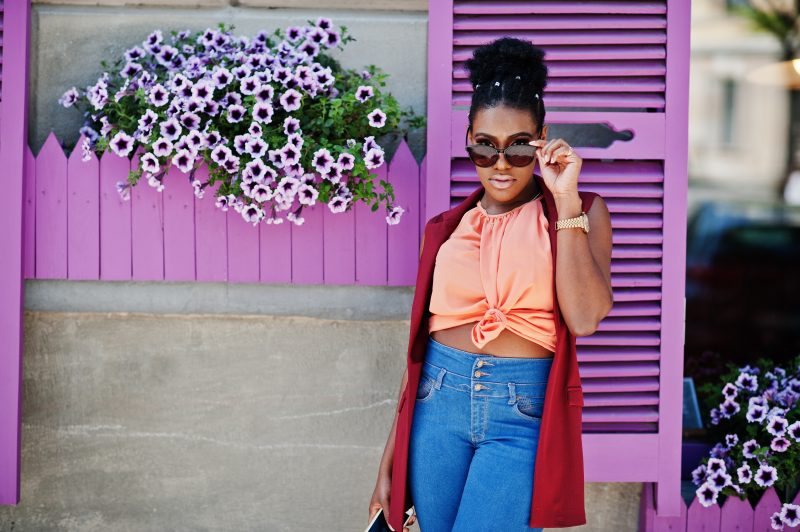
I decided to test this theory at a recent industry event, wearing chocolate brown wool trousers I’ve had for years with a new cobalt blue oversized shirt and simple tan flats. The outfit felt both current and comfortable—the fashion equivalent of knowing the latest slang but using it sparingly and in the right context.
Within minutes of arriving, a fashion director I’ve been trying to connect with professionally for months came over specifically to compliment my “perfect color combination.” We ended up chatting for twenty minutes and exchanged contact information. Whether it was the outfit or the conversation that made the impression I can’t say for certain, but I’ve worn variations of this combination to three events since, each time receiving more compliments than my outfits typically generate.
The most interesting aspect of this color trend is how it seems to function as a sort of secret handshake among fashion people—a way of signaling awareness without the flashiness of more obvious trends. It communicates taste rather than trendiness, discernment rather than conspicuous consumption.
“It’s like a fashion dog whistle,” Emma observed recently as we counted no fewer than seven blue-and-brown combinations at a friend’s book launch. “Not everyone hears it, but the people who do immediately recognize each other.”
As with all trends, this one will eventually give way to the next interesting color combination. Fashion is nothing if not cyclical, and colors are particularly subject to the industry’s relentless churn. But for now, this pairing offers something surprisingly nuanced in the trend landscape—a combination that rewards quality, flatters widely, and requires just enough color theory knowledge to feel insider-y without being exclusionary.
So if you spot someone in chocolate brown trousers and a cobalt blue top looking inexplicably put-together at your next social gathering, you’ll know: you’re in the presence of someone who speaks the current visual language of fashion. Whether you choose to adopt the combination yourself or simply appreciate it from afar is up to you—but either way, you now know exactly what you’re looking at. Consider yourself fluent in Spring 2025’s most insider color trend.
